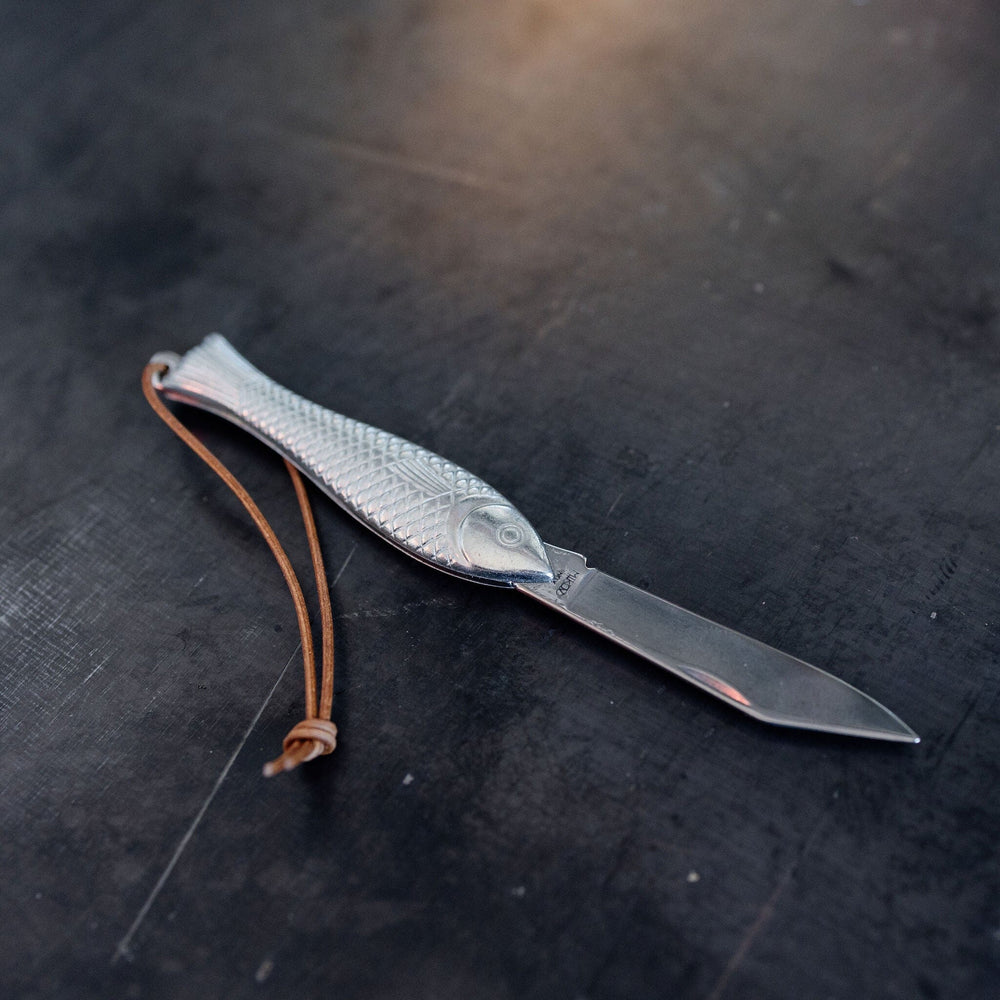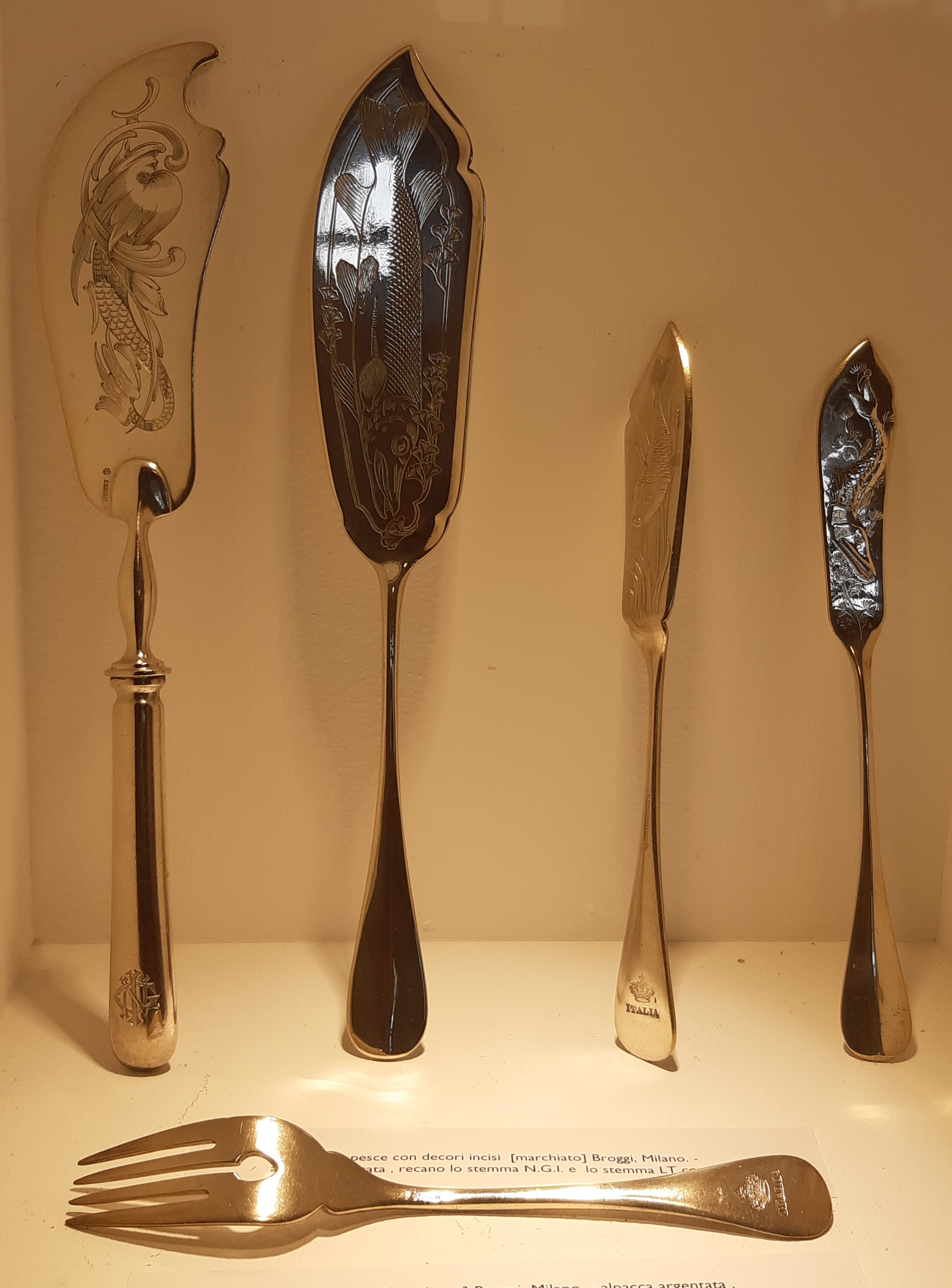The role of knife design in a quality fish knife
Wiki Article
The Ultimate Guide to Maintaining Your Fish Knife for Long Life and Efficiency
Maintaining a fish knife is important for guaranteeing its longevity and optimal efficiency. Appropriate treatment includes a series of actions, including cleansing, sharpening, and storage. Each stage adds to the knife's efficiency during usage. Understanding these practices can make a considerable difference in the life expectancy of this essential device. Several individuals overlook important aspects of upkeep that can lead to wear and tear. What are these often-forgotten actions?Picking the Right Fish Knife for Your Requirements
When choosing the perfect fish knife, what key features should one consider? The blade's versatility is extremely important, permitting for accuracy while filleting various fish types (fish knife). A slim, narrow blade frequently improves ability to move, making it simpler to browse around bones and skin. The material of the blade also plays a crucial duty; stainless steel provides sturdiness and rust resistance, important for constant direct exposure to waterFurthermore, the take care of's layout needs to not be neglected. It ought to give a comfy grasp, ideally featuring non-slip products that make certain security throughout use. The knife's size is another factor; shorter blades can supply better control, while longer blades may be helpful for bigger fish. Ultimately, weight is necessary; a well-balanced knife permits for expanded usage without exhaustion. By very carefully considering these features, one can choose a fish knife that meets specific requirements for effective fish prep work.
Proper Cleaning Techniques After Each Usage
Appropriate cleansing methods after each usage are vital for preserving the long life and efficiency of a fish knife. Instantly after filleting fish, it is crucial to rinse the knife under cozy water to get rid of scales, sludge, and any kind of recurring fish juices. Utilizing a soft sponge or cloth, the customer should gently scrub the blade and deal with, paying special interest to any type of holes where debris may accumulate. Stay clear of utilizing abrasive materials that could scrape the blade's surface area. After washing, the knife ought to be thoroughly dried with a clean towel to avoid moisture-related damages. Applying a food-safe mineral oil regularly can assist preserve its honesty if the knife has a wooden handle. Keeping the knife in a designated sheath or magnetic strip can further safeguard it from unexpected damages and ensure it continues to be clean and ready for future usage. Regular adherence to these cleansing methods will boost the knife's life-span and effectiveness.Sharpening Your Fish Knife: Methods and devices
Developing a fish knife is an important process that boosts its efficiency and makes sure tidy cuts while filleting. To accomplish ideal intensity, a number of devices can be employed. A whetstone is considered one of the most effective techniques, enabling for accurate control over the sharpening angle. Individuals should wet the stone and preserve a regular 20-degree angle while sliding the blade across its surface area.A developing rod can be made use of for regular upkeep, straightening the blade's side without getting rid of material. For benefit, electric sharpeners use a fast service, though they might not offer the same degree of finesse as hands-on methods.
Despite the selected technique, it is necessary to completed with a natural leather strop to brighten the edge, guaranteeing a lancinating finish. Routine sharpening not just extends the life of the fish knife yet also improves the general effectiveness of the filleting procedure.
Keeping Your Fish Knife for Optimal Defense
After developing a fish knife, interest has to transform to its storage space to keep the blade's stability and efficiency. Appropriate storage is essential for protecting against damage, dulling, and corrosion. Preferably, a fish knife must be stored in a safety sheath or knife roll, which shields the blade from contact with ecological aspects and various other tools (fish knife). Magnetic strips can likewise work, enabling for accessible and safe storage space while maintaining the blade secure
Routine Upkeep Regimens to Adhere To
A regular upkeep routine is important for preserving the performance and appearance of a fish knife. Routine cleaning after each usage is important; washing the blade with cozy water and light soap eliminates any kind of residue. It is suggested to dry the knife thoroughly to stop corrosion. Periodically, a light application of food-safe mineral oil can help safeguard the blade and maintain its sheen.
Saving the fish knife in a safety case or sheath prevents unintended damages and maintains it ready for use. Following these upkeep regimens will significantly enhance the durability and effectiveness of the fish knife.
Often Asked Inquiries
Can I Use My Fish Knife for Other Kinds of Fish?
Yes, a fish knife can be used for various other sorts of fish. Nonetheless, the performance might differ relying on the knife's layout and the details fish being processed, affecting performance and precision throughout prep work.What Materials Are Finest for a Fish Knife Blade?
Stainless steel and high-carbon steel are thought about the finest materials for a fish knife blade. Stainless steel uses rust resistance, while high-carbon steel supplies remarkable sharpness and edge retention, necessary for reliable fish prep work.Just how Often Should I Replace My Fish Knife?
A fish knife need to typically be changed every 3 to five years, depending upon use and upkeep. Regular evaluation for signs of their explanation wear or damages can also assist determine the correct time for replacement.Are There Particular Brand Names Known for Quality Fish Knives?
Particular brand names, like Wüsthof, Victorinox, and Rapala, are renowned for generating premium fish knives. These brand names are recognized for their toughness, sharpness, and ergonomic styles, making them preferred selections amongst angling lovers and professionals alike.Can Temperature Level Impact My Fish Knife's Performance?
Temperature level can dramatically impact a fish knife's efficiency. Severe warmth might cause blade products to warp, while he said cool problems can bring about brittleness. Maintaining an optimal temperature is crucial for protecting the knife's capability and toughness.The knife's size is an additional factor; much shorter blades can use better control, while longer blades may be helpful for bigger fish. Right away after filleting fish, it is important to rinse the knife under cozy water to get rid of scales, scum, and any kind of residual fish juices. After sharpening a fish knife, focus should transform to its storage space to preserve the blade's honesty and performance. Preferably, a fish knife ought to be saved in a protective sheath or knife roll, which shields the blade from call with ecological elements and various other utensils. Yes, a fish knife can be utilized for other types of fish.
Report this wiki page